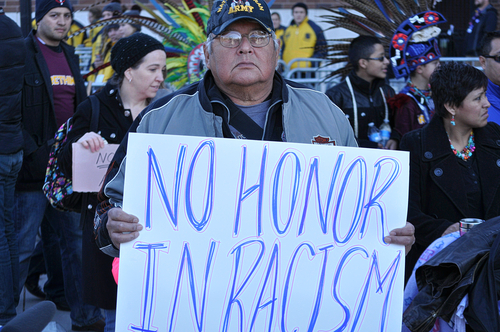Native American Graves Protection and Repatriation Act
 Perhaps the most contentious issue in the Native American struggle for self-determination is the disposition of ancient Native American burials. Concerned about the large numbers of Native American human remains being housed in museums across the country, tribes began to vocally demand their return in the 1970s and 1980s. Their efforts were rewarded on November 16, 1990 with the enactment of the Native American Graves Protection and Repatriation Act (NAGPRA). This federal law has three provisions. First, it requires museums that receive federal funds to return any Native American human remains or "cultural objects" in their possession to Indian tribes. (For the purposes of NAGPRA, cultural objects are defined as funerary offerings, sacred offerings, or objects of cultural patrimony). Second, it vests Native Americans with the ownership of any human remains or cultural objects discovered on federal lands after 1990. And finally, it makes it illegal to sale or purchase Native American human remains and cultural objects.
Perhaps the most contentious issue in the Native American struggle for self-determination is the disposition of ancient Native American burials. Concerned about the large numbers of Native American human remains being housed in museums across the country, tribes began to vocally demand their return in the 1970s and 1980s. Their efforts were rewarded on November 16, 1990 with the enactment of the Native American Graves Protection and Repatriation Act (NAGPRA). This federal law has three provisions. First, it requires museums that receive federal funds to return any Native American human remains or "cultural objects" in their possession to Indian tribes. (For the purposes of NAGPRA, cultural objects are defined as funerary offerings, sacred offerings, or objects of cultural patrimony). Second, it vests Native Americans with the ownership of any human remains or cultural objects discovered on federal lands after 1990. And finally, it makes it illegal to sale or purchase Native American human remains and cultural objects.
NAGPRA has not been without controversy. Some scientists argue that the human remains and objects are part of all of our patrimony, and should be accessible for scientific study. Others argue that the law is well intentioned, but that it should not extend to ancient remains for which no direct linkage to a tribe can be established. Other scientists, however, believe that the improved communication with tribal members that has resulted since the implementation of the law has benefitted anthropology and other scientific disciplines.
Click next page to continue.
